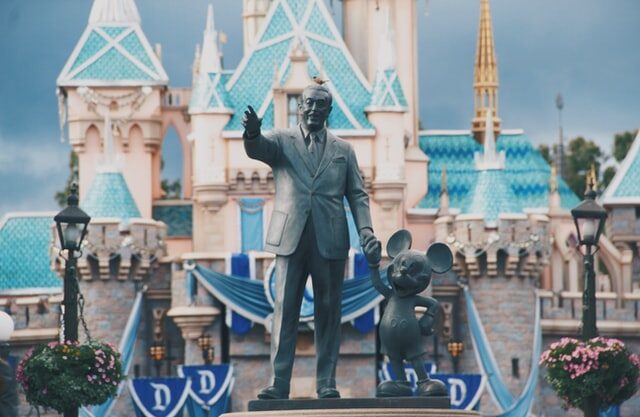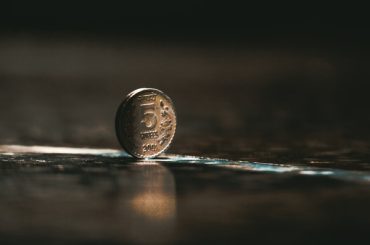How often do you see three different generations in a family getting excited about the same thing?
At a recent family gathering, we were all reminiscing about our favorite travel memories from the past year, which is when this struck me. My 7-year-old cousin talked about her trip to the United States, and she was more than excited to describe her day at Disneyland Park. Surprisingly, even for her parents and grandparents, Disneyland stood out as one of the most memorable parts of the trip.
‘The Happiest Place on Earth’ for a reason!
Mickey Mouse: The beginning of Experiential Marketing at Disney
Did you know that our very own Mickey Mouse was originally a rabbit?
Walt Disney and Roy Disney started the ‘Disney Brothers Studio’ in 1923 and produced their first major hit with ‘Oswald, the Lucky Rabbit.’ However, soon enough, they ended up losing the copyright for Oswald to their distributor.
In a desperate attempt to create a new character, Walt redrew the rabbit’s ears and a few changes later, the famous Mickey Mouse was born.
However, Mickey Mouse was not an instant hit. This was the first time Walt Disney tried to add a dash of life to a cartoon character – he added a synchronized sound to the character, which had never been tried in the industry before.
There was no looking back for Mickey from here. The character became a mass favorite, and the entire idea of bringing cartoon characters to life started gaining popularity.
Disney had already started revolutionizing the industry – a cartoon character that has a dedicated sound to it; That’s where Disney’s experiment with experiential marketing began.
Catch a few interesting facts about our very own Mickey Mouse!
Disney Movie Franchises: A fine example of Marketing 3.0:
Traditionally, when you think about the marketing strategy of a brand, they’d either be focusing on the products or the customers.
Disney changed the game – it implemented the concept of emotional marketing. Disney has mastered using emotions as a marketing technique – what better way to do this than hitting the ‘Nostalgia’ chord time and again.
Remember the times Disney revived old classics like ‘The Jungle Book’ or recreated the magic of ‘Beauty and the Beast’. The trailers, music, theme were so similar to the original version, that they created a strong sense of nostalgia among the current parents, thereby luring them to take their own kids to these movies.
At the core of this strategy is Disney’s understanding of its target audiences.
The brand realizes the emotional engagement that the customers have with the Disney characters and stories. Thus, making the same characters reappear time and again will never get old. Most of their customers are not looking out for new characters; they are looking for ways to feel a renewed connection with the old characters – the precise reason why sequels and remakes work wonders for Disney.
Still, Disney also looks out for its other fans who want new stories and characters. For these customers, Disney bought Marvel to cater to their desire for rich and complex storytelling.
Disney Merchandises: Knitting an entire experience together:
Get the story. The story’s the most important thing. Once you’ve got the story, then everything else will fall into place
Walt Disney.
If one has to sum up the success of Disney in few words, this would be it. No other brand has mastered the art of storytelling, as well as Disney, has.
Now what’s unique here?
Disney doesn’t build a story with its movies. It doesn’t a build a story with its toys and merchandises as well. It adds all those elements and gifts us an integrated experience – which is at the core of Marketing 3.0.
Brands all around the world now realize the power of storytelling. A brand is successful only if it tells a story through its offerings – that’s a general belief.
However, what Disney has been doing since ages, is quite the reverse.
Disney creates the stories first and then develops the products!
So, when you see a product for the first time, you already know their story, you already have a connection. If that doesn’t build brand loyalty, I don’t know what else does.
When you see a doll, that’s designed after your favorite ‘Frozen’ character, you don’t need the brand to indulge in content marketing to lure you. You are already engaged. That’s the beauty of Disney – the way it has integrated Merchandising with its entire movie experience.
Every Disney billboard, commercial or advertisement that we see, depicts a story.
If a customer misses one Disney movie, he/she is missing more than just a film – they are practically skipping a few pages from a book that they so love.
When a new movie is released, it’s not just released in the theatres, it’s also released in all retail stores in the form of toys and other merchandise.
Disneyland: Experiencing a universe of Content:
Disneyland is not famous for its world class rides or high-end retail merchandises. It’s famous because once inside the park, the visitors are actually interacting with an entire universe of content.
While waiting at the endless queues, the visitors are treated to performances by their favorite Ariel and Ursula. Kids are greeted by their favorite ‘Princess’ characters, dressed in complete gear. Badges and balloons are handed over to children at random places. Examples like these are plenty inside the park.
From its very first year, the Walt Disney World became the highest grossing theme park globally. The very first year saw nearly 11 million visitors, giving in almost 140 million dollars of revenue.
What drove this major success?
Many believe, that at the heart of the initial success of Disneyland lies the fact that Disneyland represents an end-to-end experience that one can actually perceive with their senses.
As an example, the company understands that once inside Disneyland, the visitors are using all their senses to feel engaged – even their sense of smell.
In her book, Jody Jean Dreyer describes a patented machine called the “Smellitzer” that Disney uses at its parks. The scent-emitting machine creates a variety of aromas to match different locations around the park. As the article from Fast Company states, “even the wafts of popcorn along Main Street U.S.A. are by design.”
Source
The next thing that worked well for Disneyland was how well the company understood the entire customer journey in order to provide an integrated experience.
Disneyland was not just a place where parents would take their kids; it was a place that grownups would equally enjoy and cherish.
Even while Disneyland park was being conceptualized, Walt Disney believed that ‘traditional parks are neither clean, nor amusing and offered nothing for the Daddy’. His idea was to build a theme park that the entire family could enjoy together – an experience for the entire family.
Time and again, Disney has infused enough capital for the expansion and maintenance of its theme parks around the world – strategies like expanding resorts and hotels, setting up a nightlife complex Pleasure Island, arranging conferences in the Disneyland hotels worked wonders and kept the popularity of Disneyland intact amongst all generations.
Giving Customers what they want:
The cases of Disneyland Tokyo and Disneyland Paris are perfect examples of how Disney places utmost importance on customer experience.
At Disneyland Tokyo, they realized that visitors were expecting a complete American experience, once inside the park. This meant that selling traditional Japanese food items like sushi would not cater to the customer’s needs.
The result? Disney made sure that Disneyland Tokyo is selling American food and beverages like burgers and fries and not Japanese cuisine. That’s what the Japanese visitors wanted.
Quite the opposite happened in Disneyland Paris where visitors still preferred to indulge in French food. Disney tailored the experience accordingly and set up French food joints within the park. They even went one step ahead and added alcohol to table service restaurant menus, which was a major exception to the general ‘no alcohol’ rule at other Disneylands.
Continuing the tradition of Timeless Magic:
Ever since its foundation in 1923, Disney has mastered the art of creating timeless emotional connect with its customers.
Disney is not just an entertainment company, they are a consumer goods company, or much more than that.
So, the next time you read about content marketing strategies by brands or hear about companies using experiential marketing as a medium of engagement, remember it all started at Disney!
If there’s one takeaway you want to have from this piece, it’s this – ‘ Every brand needs a story!’
-AMAZONPOLLY-ONLYWORDS-START-
Also, check out our most loved stories below

Johnnie Walker – The legend that keeps walking!
Johnnie Walker is a 200 years old brand but it is still going strong with its marketing strategies and bold attitude to challenge the conventional norms.

Starbucks prices products on value not cost. Why?
In value-based pricing, products are price based on the perceived value instead of cost. Starbucks has mastered the art of value-based pricing. How?

Nike doesn’t sell shoes. It sells an idea!!
Nike has built one of the most powerful brands in the world through its benefit based marketing strategy. What is this strategy and how Nike has used it?

Domino’s is not a pizza delivery company. What is it then?
How one step towards digital transformation completely changed the brand perception of Domino’s from a pizza delivery company to a technology company?

BlackRock, the story of the world’s largest shadow bank
BlackRock has $7.9 trillion worth of Asset Under Management which is equal to 91 sovereign wealth funds managed. What made it unknown but a massive banker?

Why does Tesla’s Zero Dollar Budget Marketing Strategy work?
Touted as the most valuable car company in the world, Tesla firmly sticks to its zero dollar marketing. Then what is Tesla’s marketing strategy?

The Nokia Saga – Rise, Fall and Return
Nokia is a perfect case study of a business that once invincible but failed to maintain leadership as it did not innovate as fast as its competitors did!

Yahoo! The story of strategic mistakes
Yahoo’s story or case study is full of strategic mistakes. From wrong to missed acquisitions, wrong CEOs, the list is endless. No matter how great the product was!!

Apple – A Unique Take on Social Media Strategy
Apple’s social media strategy is extremely unusual. In this piece, we connect Apple’s unique and successful take on social media to its core values.
-AMAZONPOLLY-ONLYWORDS-END-



















